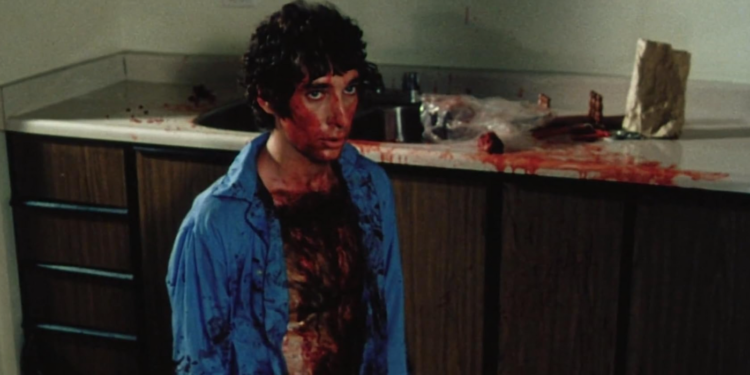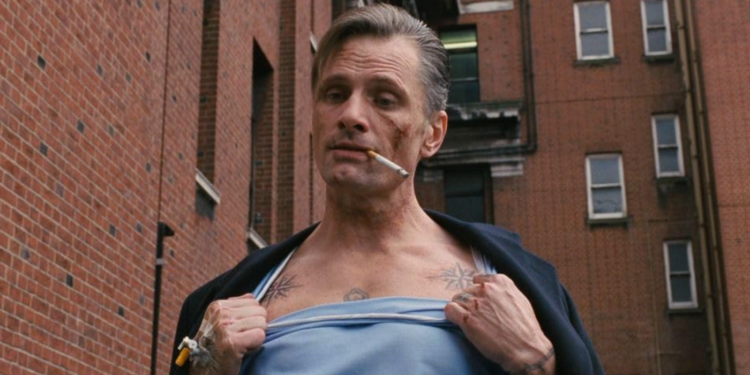David Cronenberg, who was born in Toronto, Canada in 1943, has become a legendary and influential figure in the world of film. He has tackled a wide array of genres throughout his career, including horror, science-fiction, drama, and even crime thrillers. However, he is perhaps most famous for being one of the pioneers of “Body Horror”, a sub-genre that explores the physical and psychological transformation of the human body.
Cronenberg’s films often feature gruesome and grotesque imagery. However, they also offer an incisive commentary on topics such as technology, sexuality, and mortality. He is truly a visionary filmmaker who has pushed the boundaries of what is possible in cinema. His movies explore the darker corners of the human experience with unflinching intensity. So, let’s take a deep dive into the career of David Cronenberg and explore his best works.
The Early Projects of David Cronenberg
Shivers (1975)

Shivers, released in 1975, marked David Cronenberg’s first feature film after numerous TV movies. Despite the film being made on a shoestring budget, it managed to shock audiences through its realistic gore. This successfully established Cronenberg as a talent to be reckoned with in the horror genre, and set him on a path to future success in Hollywood.
Shivers‘ plot revolves around a group of people trapped in a high-rise apartment building that becomes overrun with parasites. These parasites turn the hosts into sexual predators. The film attracted controversy due to its graphic content, but its success paved the way for similar horror films that pushed the envelope in their depiction of violence and sex.
Scanners (1981)

Scanners is a science fiction film directed by David Cronenberg that tells the story of a group of humans known as Scanners. These individuals possess psychic powers that can alter reality and control people’s minds. The movie’s plot revolves around the struggle of two Scanners, one a rogue and the other with a conscience. Together, these two attempt to stop a maniacal Scanner who plans to use his powers to take over the world.
The film features a talented cast, including Michael Ironside, Stephen Lack and Jennifer O’Neill, who all shot to fame after the release of the movie. Furthermore, Scanners is also known for its groundbreaking special effects, particularly its infamous “head explosion” scene. This film broke new ground with its use of practical effects, making it a classic in the body horror genre to this day.
Videodrome (1983)

Videodrome revolves around the owner of a television station whose search for new programming leads him to discover a mysterious and violent pirate broadcast known as Videodrome. The protagonist, Max Renn (James Woods), becomes increasingly obsessed with this bizarre transmission. This sends him on an exploration of graphic scenes of torture and murder. As a result, he begins to experience bizarre hallucinations and disturbing physical transformations.
As the plot unfolds, Max delves deeper into the origins of the transmission, ultimately leading to a surreal and horrifying climax. Following the success of his previous film, Scanners, Cronenberg capitalized on his increasing fame as a horror director with Videodrome. With a larger budget, he was able to push his infamous body horror effects even further than before. The result is a film filled with grotesque and disturbing sequences that leave a lasting impression on viewers.
The Fly (1986)

David Cronenberg’s 1986 remake of the classic 1958 horror film, The Fly, is a masterful and disturbing exploration of the consequences of unchecked scientific experimentation. The film follows scientist Seth Brundle (Jeff Goldblum) as he develops a teleportation device in his lab. However, terror ensues when a tragic accident fuses his genetic material with that of a common housefly.
As a result, Brundle begins a horrifying transformation that melds him with the insect and drives him to madness. Cronenberg’s direction is subtle, yet chilling, as he expertly balances the film’s quieter, character-driven moments with its intense body horror sequences. Furthermore, many consider The Fly to be Cronenberg’s finest work. This critically acclaimed classic is a testament to his unique vision and ability to subvert genre expectations.
David Cronenberg’s Shift to the Crime Genre
A History of Violence (2005)

A History of Violence follows the story of small-town family man named Tom Stall (Viggo Mortensen). After stopping a violent robbery at his diner, Stall’s life is turned upside down when he becomes hailed as a hero. However, his new-found fame attracts unwanted attention. This soon reveals that Tom has a dark and violent past that he has tried to leave behind.
The film explores themes of identity, family, and violence, and features powerful and intense performances from its cast, including Maria Bello, Ed Harris, and John Hurt (in an Oscar-nominated role). A History of Violence stands out as a defining shift for Cronenberg, as he stepped away from his usual horror genre to deliver a more character-driven crime drama. While the film features scenes of intense violence, Cronenberg manages to deliver them in a way that serves the story, without gratuitous or exploitative depictions.
Eastern Promises (2007)

Eastern Promises is a gripping crime thriller directed by David Cronenberg and starring Viggo Mortensen. The film follows the story of a midwife named Anna (Naomi Watts), who becomes embroiled in the dangerous world of the Russian Mafia after delivering a baby of a young underage prostitute who dies soon after childbirth. Anna is determined to find the baby’s family, which leads her to the Vory V Zakone – an organized crime group. After this, she enlists the help of a mysterious driver named Nikolai, played by Mortensen, who seems to have ties to the group. Eastern Promises marks the second collaboration of Cronenberg and Mortensen, who previously worked together on A History of Violence. This partnership would go on for three more projects, resulting in some of the most haunting and thought-provoking films in recent years.
Unveiling David Cronenberg’s Most Recent Works

In 2011, David Cronenberg released A Dangerous Method. The film is based on the true story of the relationship between renowned psychologists Carl Jung (Michael Fassbender) and Sigmund Freud (Viggo Mortensen). The plot revolves around the tensions and conflicts that arise between the two as their philosophical differences and personal beliefs begin to clash. By exploring the human psyche and the complexities of the human mind, Cronenberg showcased a different side of his artistic sensibilities. Since then, Cronenberg has returned to the horror genre with his film, Crimes of the Future.
 Follow Us
Follow Us




